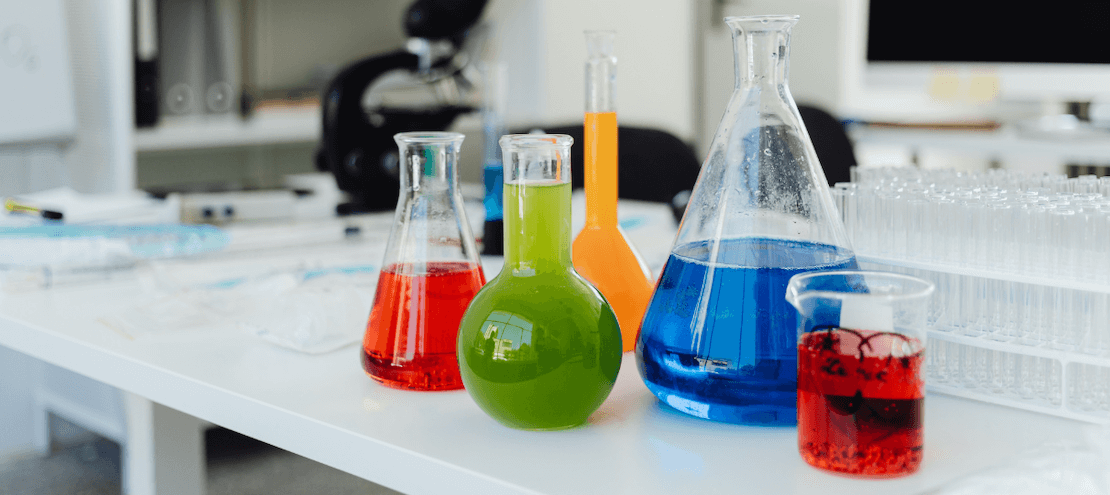In an era where electronic devices seamlessly integrate into every facet of our daily lives, the demand for sustainability in the global electronics industry has reached a pivotal moment. Beyond the allure of cutting-edge features, both manufacturers and consumers are recognizing the pressing need for eco-conscious practices. Sustainability, now more than ever, is not just a buzzword but a fundamental consideration that transcends all life cycle phases of electronic products.
Facing Sustainability: Current Challenges in the Electronics Industry
As the electronics industry moves boldly into a sustainable future, it faces a multitude of challenges that are essential to its success. Below, we highlight some of the pressing challenges manufacturers face as they move towards a greener, more sustainable electronics landscape.
-
Supply Chain Complexity
The electronics supply chain is undoubtedly complex and global. From raw material extraction to manufacturing processes and transportation, each stage poses a sustainability challenge. Ensuring transparency and ethical practices in this complex network is a daunting task. Obtaining relevant data and information about the entire supply chain plays an important role in this. -
Material Sourcing and Environmental Impact
Securing responsibly sourced materials is a challenge, considering the impact to the environment of mining and extraction. Finding alternative materials with lower ecological footprints while maintaining performance standards is a delicate balancing act. -
Energy Consumption
The energy-intensive production and use of electronics is a constant challenge. From energy-intensive production processes to power-intensive devices, optimizing the associated carbon footprint by reducing greenhouse gas emissions throughout the life cycle requires innovative solutions and a commitment to renewable energy sources. -
Batteries
Batteries, particularly lithium-ion types, require significant amounts of raw materials such as lithium, cobalt, and nickel, which are often mined under environmentally and ethically questionable conditions. The extraction process is energy-intensive and can cause severe ecological damage, including habitat destruction and water pollution. Additionally, the disposal of batteries presents a significant challenge as they can leak toxic chemicals into the environment if not properly recycled. -
E-Waste Dilemma
As technologies evolve, electronic devices become obsolete at an alarming rate, leading to an increase in electronic waste (e-waste). The environmental impact of e-waste is a significant challenge, making proper disposal, recycling, and responsible end-of-life management crucial in mitigating the harm caused by discarded electronics and the depletion of valuable resources.
Strategies for Achieving Sustainability in Electronic Products
To tackle these challenges electronic manufacturers are pursuing holistic strategies to reduce their environmental impact, from responsible sourcing of raw materials to end-of-life initiatives:
Responsible Sourcing of Raw Material
The responsible and sustainable sourcing of raw materials encompasses several aspects - environmental, legal, social and ethical considerations. From an environmental perspective, manufacturers prioritize materials with a lower ecological footprint and work with suppliers that use environmentally friendly extraction methods. Compliance with legal requirements is ensured by adhering to regulations such as RoHS.
Social responsibility includes fair labor practices, ensuring ethical treatment of workers in the supply chain and actively addressing issues such as human rights. In addition, the commitment to ethical sourcing includes the avoidance of conflict minerals and thus contributes to the overall efforts against resource-related conflicts.
Sustainable Design Practices
In the electronic landscape, sustainability takes center stage during the design phase. Forward-thinking manufacturers prioritize longevity by incorporating modular components for easy repairs and upgrades. Embracing circular economy solutions, sustainable design guides product development, emphasizing recyclability and reusability.
Energy-efficient innovations, including low-power modes, are integrated from inception. A user-centric approach not only enhances the product experience but also educates consumers on responsible device use. By weaving these principles into design, electronic manufacturers forge a path where innovation aligns seamlessly with environmental responsibility.
Green Production Processes
Manufacturers are actively adopting strategies to produce electronic devices more sustainably, minimizing environmental impact and fostering a greener production landscape.
One key aspect of sustainable manufacturing is the adoption of energy-efficient manufacturing processes. This involves optimizing production lines to optimizing resource and energy efficiency and embracing renewable energy sources to power manufacturing facilities.
Another goal is reducing material waste during production and repurposing or recycling materials whenever possible. Material Flow Cost Accounting (MFCA) is a strategic approach that helps companies identify and quantify the real costs associated with material usage along the entire production process.
Recycling and Responsible End-of-Life Management
The sustainability journey of electronic devices culminates in responsible end-of-life management. Recycling and returning old electrical appliances play a pivotal role in mitigating the environmental impact of electronic waste.
- Take-Back Programs:
Leading electronic manufacturers are spearheading take-back programs, allowing consumers to return their old devices for proper disposal. This not only prevents electronic waste from ending up in landfills but also facilitates the recovery of valuable materials for reuse in new products. - Tech Refurbishment and Re-Commerce:
An emerging trend in sustainable end-of-life management is the rise of tech refurbishment and re-commerce markets. Electronics that are still functional are refurbished and resold, extending their lifecycle and reducing the need for new manufacturing. -
Closed-Loop Recycling:
Sustainable recycling processes include closed-loop systems in which the materials recovered from old devices are reintegrated into the production process, utilizing circular economy for sustainability. -
Consumer Education:
It is crucial to encourage consumers to actively participate in recycling initiatives. Manufacturers are investing in educating consumers about the importance of recycling, for example by providing clear guidance on the proper disposal of waste equipment.
Exemplary Sustainability Practices in the Electronics Industry
As environmental concerns take center stage, some pioneering companies have risen to the occasion and set notable examples of sustainable business practices. This chapter looks at some notable examples of the electronics industry's commitment to sustainability and shows that environmental responsibility and progress in technology can go hand in hand.
Jabra's Holistic Sustainability Approach: from Green Packaging to Green Products
Jabra has made significant strides in sustainability through various initiatives and projects. A key milestone is their commitment to 100% sustainable packaging for products like the Elite 85t earbuds and the Evolve2 headset range. The packaging for the Elite 85t, for example, is fully recyclable and significantly reduced in size, with 85% less plastic compared to earlier models. This move not only cuts down on waste but also reduces transportation emissions by allowing more products to be shipped simultaneously. Moreover, Jabra has implemented product take-back schemes under their Green Initiative. Customers can trade in their old devices for recycling and receive discounts on new purchases, aligning with the European WEEE Directive to ensure proper electronic waste disposal.

Jabra’s sustainability efforts extend beyond packaging and recycling. They are committed to broader environmental and social goals, such as achieving climate neutrality in their operations by 2025 and using at least 50% sustainable materials in new products. These efforts are part of their parent company, GN Group's, larger sustainability strategy.
Logitech's Pioneering Move Towards Carbon Impact Labeling
Logitech, the Internationally active computer accessories manufacturer based in Apples, Switzerland, is spearheading a revolutionary initiative in the consumer electronics realm by committing to provide detailed carbon impact labels on their entire product portfolio by 2025. Logitech plans to introduce carbon impact labels on their gaming products as early as late 2020. Recognizing its environmental responsibility, Logitech aims to transparently communicate the carbon footprint of each product through these labels.

Alastair Curtis, Logitech’s Chief Design Officer, emphasizes the company's commitment to creating sustainable, ethical, and useful products, with carbon transparent labeling as a crucial step towards this goal. These labels not only aid in product development by quantifying the Carbon Footprint but also empower environmentally conscious consumers to make informed purchasing decisions.
Fairphone - Pioneering Ethical Electronics
Fairphone, a Dutch company, is rewriting the narrative of smartphone manufacturing through a commitment to ethical practices. With a mission to create a fairer and more sustainable electronics industry, Fairphone meticulously navigates every phase of the smartphone lifecycle. From responsibly sourcing raw materials to ensuring fair labor practices in production, the company champions transparency and ethical sourcing. Fairphone's modular design facilitates repairs and upgrades, helping to reduce electronic waste. Fairphone's approach challenges industry norms and advocates for a fundamental shift in the way phones are produced and consumed.
Apple's Take-Back Program - Nurturing a Circular Economy
Apple, a global tech giant, is making significant strides in fostering a circular economy through its Take-Back Program, operating in 99% of the countries where Apple products are sold. At the core of this initiative is Apple Trade In, available in 25 countries, enabling customers to recycle any Apple device, including those from Apple-owned brands, for free.
This initiative demonstrates the company's commitment to sustainability by encouraging consumers to return their old devices for proper disposal and recycling. By providing a seamless process for customers to responsibly part ways with their electronic devices, Apple not only minimizes electronic waste but also facilitates the recovery of valuable materials for reuse in new products.
Siemens & Intel: Transforming Semiconductor Sustainability
Siemens AG and Intel Corporation have agreed to collaborate to drive the digitalization and sustainability of microelectronics manufacturing and increase the efficiency of semiconductor production.
The collaboration includes key areas such as optimizing energy management, leveraging digital twins and Internet of Things (IoT) for efficient manufacturing and minimizing energy consumption across the value chain. Siemens and Intel are working together on sustainability in the lifecycle of semiconductors, from design to recycling, contributing to the industry's goal of zero greenhouse gas emissions.
Regulatory Requirements and Directives
In the wake of the challenges facing the electronics industry and consumers, regulatory authorities around the world have taken up the issue and passed a number of important regulations.
Latest regulations in the EU
Electrical and electronic equipment represents one of the most rapidly expanding categories of waste in the European Union. In response to this growing challenge, the circular economy action plan incorporates a range of initiatives designed to enhance both the longevity and recyclability of these devices. Furthermore, in November 2022, the EU adopted the common charger directive, mandating USB-C ports for various electronic devices, including mobile phones, video game consoles, wireless keyboards, and laptops.
New EU rules will allow consumers to buy more energy-efficient, durable, and repairable mobile phones and tablets. The ecodesign regulation sets minimum standards for battery durability, spare parts availability, and OS upgrades. The energy labelling regulation mandates displaying energy efficiency, battery longevity, and a repairability score. Additionally, EU institutions are updating rules on waste from electrical and electronic equipment, including computers, fridges, and photovoltaic panels. The amendments aim to align the WEEE directive with an EU Court of Justice ruling on retroactive extended producer responsibility for photovoltaic panels sold between August 13, 2005, and August 13, 2012.
The EU has also implemented a new regulation on batteries to establish a circular economy within the sector, addressing every stage of a battery's life cycle, from design to waste management. This initiative is crucial, especially considering the rapid expansion of electric mobility.
Regulations in the US
In the USA, programs and regulations have also been introduced for a long time to regulate various aspects of the electronics market with regard to sustainability. Twenty-five U.S. states (plus the District of Columbia) currently have electronics recycling laws.
On a national level the Resource Conservation and Recovery Act (RCRA) grants the Environmental Protection Agency (EPA) authority to control hazardous waste from its generation to its disposal, including regulations for batteries and electronic waste. Key provisions of the RCRA include the Universal Waste Rule, which simplifies the management of certain hazardous wastes, such as batteries, by setting standards for their collection, recycling, and disposal, and mandates for the proper disposal and recycling of electronic waste to prevent environmental contamination.
The Battery Act, or Mercury-Containing and Rechargeable Battery Management Act, focuses on reducing mercury in batteries and promoting the recycling and proper disposal of rechargeable batteries. This act limits the use of mercury in consumer batteries and ensures proper labeling for disposal and recycling.
The Energy Policy Act of 2005 includes several provisions to enhance energy efficiency in electronic products. One of the key components is the Energy Star Program, a voluntary initiative that encourages the production of energy-efficient products, including electronics, by providing certification for those that meet specific energy-saving criteria.
Innovative Software Solutions for Sustainable Practices
In the dynamic landscape of the electronics industry, achieving product sustainability is not only a matter of physical design and production, but also requires robust digital technologies. iPoint offers a range of innovative software solutions, from regulatory compliance to sustainability. By harnessing the power of iPoint's software solutions, electronic manufacturers not only meet regulatory requirements but also gain a strategic advantage in making environmentally conscious decisions throughout the product lifecycle:
iPoint Compliance - Manage what you measure
Our Product Compliance Software ensures that products adhere to environmental regulations such as RoHS compliance, improving your supply chain integration and risk management. In addition, with iPoint Conflict Minerals we offer software for the automation of Conflict Minerals compliance processes.

iPoint Compliance stands as a beacon for navigating the complex landscape of regulations and standards in the electronic industry.
iPoint Sustainability - Integrate LCA into your business
Based on the LCA software for experts, Umberto, our iPoint Product Sustainability software automates the creation of Product Carbon Footprints (PCF) and Life Cycle Assessments (LCA). This automation not only increases accuracy, but also enables manufacturers to seamlessly integrate comprehensive insights into the environmental impact of their products throughout their lifecycle across different business processes and departments, from sourcing to prototyping, design and overall management.

iPoint Product Sustainability is not just a tool: it's a strategic ally in fostering a culture of sustainability throughout the organization.




.png)

